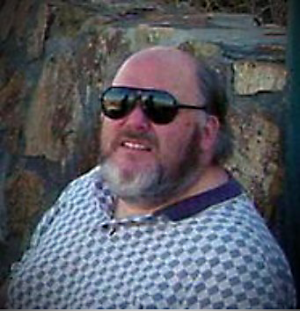Playing with the Nielsen People Meter

[November 2016] Give a broadcast engineer a piece of gear and the first thing he wants to do is open it up and find out what is inside. Then the next thing is to find out what he can do with the product – even things not intended originally by the manufacturer. This time Dana is experimenting with the Nielsen Portable People Meter (PPM), and shares his findings.
Disclaimer: The content within this article is for scientific and educational purposes only. The author nor The BDR endorse doing anything that might get you in trouble with Nielsen.
The big item at the 2015 NAB Convention in Las Vegas was a “new” product released by Telos Alliance partner 25-Seven Systems: the Voltair. I put “new” in quotations because apparently about 300 units (at $15,000 per unit) are already in the field.
The PPM System
The Nielsen PPM – the Portable People Meter – worn by ratings participants is used to detect to which station a listener is hearing. Each station has a unique ID number which makes it easy for the PPM to know what audio is present within its hearing range.
The Voltair product is designed to “enhance” a station’s ratings by amplifying the carriers embedded in the program audio of subscribing radio and TV stations.

Being able to boost the carriers containing these IDs would seem to have obvious benefits.
Potential Problems with PM
However, like most audio processing tools, there is enough gain available in the Voltair to make the normally “hidden” the carriers within the stations’ program audio actually become audible.
Obviously, this is not considered a desirable result.
There apparently is another, similar problem: the encoders are designed to mute the carriers during silence, lest they become audible simply because there is no audio there to mask them. This has become a problem for stations with non-music programming, since muting the carriers means the PPM cannot decode what is not there.
I had the opportunity to experiment with a PPM encoder and decided to see what I could accomplish on the bench. My notes and findings follow. Schematics are also available.
Understanding PPM Encoding
The first thing I did was build a noise source.
The noise source was constructed using a National Semiconductor MM5837 “white noise” generator, followed by an opamp configured as a single-pole bandpass filter. The reason for the filter is because the PPM carriers are limited to the audio range of 1 – 2.5 kHz.
Using a bandpass centered at 1.75 kHz, the generator gave me a good source of audio to feed into the PPM encoder. The noise sounds quite like it is: a filtered “hiss,” a sound not unpleasant to the human ear.
Using my white noise source, I then tried several different combinations of hook-ups to determine how the PPM encoder would respond.
And, happily, I found that the PPM encoder responds well to this kind of audio source.
Feeding the Encoder
The first thing I did was to add the generated noise to the program audio going into the PPM.
The concept for doing this is that it would help non-music formats by insuring the PPM carrier was on 100% of the time. (For music stations, that have a longer “duty cycle” of audio, it likely would not accomplish much by adding anything.)
By experimentation, I fed the “white noise” audio at different levels and found a “sweet spot” when adding the noise at approximately 25 dB below program audio.
This kept the noise low enough that it was not objectionable and kept the PPM encoder outputting carriers all the time.
Overall, the noise did a passible job of “hiding” the carriers. Nevertheless, if this is tried on air, the PPM encoder obviously must be located after all other audio processing, lest the noise (fed at 25 dB down) be brought up to 100% modulation!
Phase Inversion
The next step was to find a way to cancel out the filtered noise while keeping the PPM carriers intact. The obvious problem in that approach is the likelihood that the carriers can become audible to listeners.
With that in mind, I tried feeding nothing but the filtered noise into the PPM encoder input with no program audio – but adding the noise source inverted 180 degrees with the PPM audio output.
I was able to get about a 17 dB null – more than enough to bring the PPM carriers well above the hiss, yet not audible to listeners.
In the end, this mode provided the most optimum results: I was able to raise the PPM carrier levels about 3 dB before they became objectionable with talk and 5 dB with music. This represents a minimum of doubling the PPM carrier levels on the air.
The result is that this procedure allows one to directly inject the carriers into their program audio – pretty much at whatever level they prefer!
A Minor Caution
Does doing any of this make you in violation of your PPM agreement with Nielsen? Quite frankly I do not know – that is for lawyers to figure out.
On the other hand, I cannot see how doing this is any different than using the Voltair – and my solution costs only a few dollars to try.
– – –
Dana Puopolo is the Chief Engineer at Rowan University’s WGLS in Glassboro, NJ. You can reach Dana at dpuopolo@usa.net
